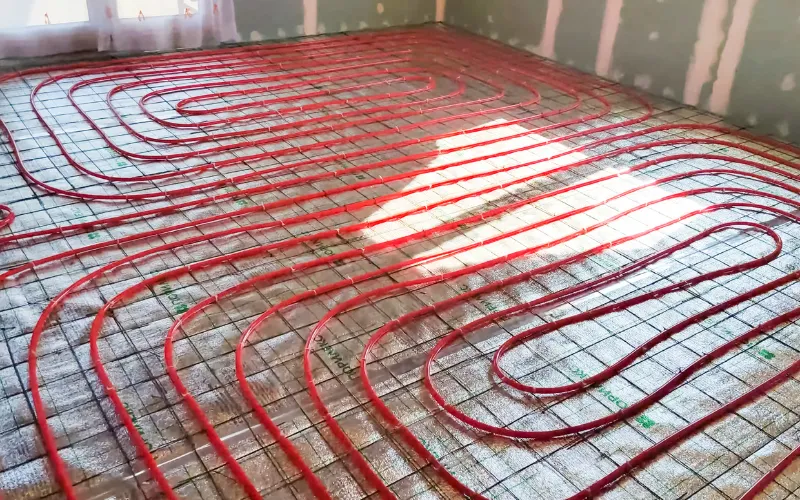
Hydronic Heating Installation: The Complete Expert Guide for Homeowners
Heating a house isn’t just about warmth. It’s comfort. It’s efficiency. It’s how you feel when you step inside on a freezing morning. And that’s where hydronic heating installation changes the game. Instead of blasting hot air around, it uses water. Quiet. Even. Reliable heat that just feels better.
So, what is it really? Simple. Hot water flows through pipes. A boiler warms it up, then pushes it under your floors or into radiators. The heat spreads slow, steady. No drafts. No dry air. Just a house that feels warm all the way through—not just patches of it.
Why go hydronic? Plenty of reasons. Efficiency’s one. These systems use less energy than most forced-air setups. Works well with renewables—solar, heat pumps, you name it. Cleaner too. No dust flying around, no allergens pushed through vents. And flexible. You can heat one room, the whole home, or even tie it into radiant floor heating.
But here’s the truth. Installation makes or breaks it. Wrong boiler size, bad pipe layout—you’ll pay for it later. Cold spots, high bills, constant repairs. The right installer, though? Decades of comfort, steady bills, and no headaches. That’s why picking who installs your system matters just as much as the system itself.
Key Takeaways
Hydronic heating installation = consistent heat + lower long-term bills.
Works perfectly with radiant floor heating and heated flooring systems.
More expensive upfront. Pays back with efficiency + comfort.
Quiet. Clean. No air blowing dust around.
A system built to last decades if done right.
Why Choose Hydronic Heating Installation?
Let’s break it down. Traditional heating? Noisy. Uneven. Often wasteful. Hydronic? Smooth. Efficient. Feels better.
Big Benefits
Even heat. No cold toes. No hot ceilings. Just balance.
Energy smart. Water holds heat better than air. Less waste.
Air quality boost. No blowing dust, pollen, or dryness.
Silent. You’ll forget it’s even running.
Where It Shines
Cold winters. Large homes. Drafty spaces. Anywhere traditional furnaces struggle, hydronic thrives. Especially when paired with radiant floors—it’s comfort at another level.

How Hydronic Heating Actually Works
Simple idea. Smart execution.
A boiler heats water. That water flows through tubing under your floors or into radiators. Heat spreads evenly. You control it with zones and thermostats.
Main Parts
Boiler (gas, electric, propane, even solar-assisted).
PEX tubing (durable plastic, flexible, long-lasting).
Manifolds (the traffic directors for water flow).
Thermostats & sensors (for dialing in comfort).
Radiant Floor Heating
This is the game-changer. Imagine walking barefoot across a warm tile floor in January. Feels… well, amazing. That’s hydronic radiant heat working under the surface.
Types of Hydronic Heated Flooring Systems
Not one-size-fits-all. Different setups for different needs.
In-Slab
Tubing inside a thick concrete slab. Perfect for new builds, garages, basements. The slab itself becomes a giant heat bank.
Thin-Slab / Overpour
Tubing laid, then topped with lightweight concrete or gypsum. Best for remodels when you don’t want a full slab.
Dry Systems
Installed under subfloors or between joists. Lighter. Faster. Great for retrofits.
Radiator-Based
The old-school but reliable approach. Instead of floors, heat moves through radiators or baseboards. Still hydronic. Still efficient.
What It Costs
This is where reality checks in.
Factors That Matter
Size of home.
Type of system (radiant floors cost more than radiators).
Energy source (gas cheaper to run than electric).
Installation type (retrofit vs. new build).
Price Ranges
$8–$20 per sq. ft. for radiant floors.
$7,000–$15,000 for boiler + setup.
Whole home install? $18k–$45k.
Yeah, it’s an investment. But look at it over 20+ years. Lower bills. Healthier air. Higher comfort. Worth it.
Step by Step: Hydronic Heating Installation
This isn’t weekend-DIY. It takes pros.
Assessment. Home size, insulation, heating needs checked.
Design. Layout mapped. Tubing patterns planned. Boiler sized right.
Install tubing. Laid in spirals or loops for even spread.
Hook up manifolds + boiler. The heart + veins of the system.
Testing + tuning. Pressure checks. Leak checks. Thermostats adjusted.
When done right—it’s seamless.
Energy Efficiency + Eco Benefits
This is where hydronic shines.
Runs at lower temps than forced air. Still feels warmer.
Works with solar or geothermal. Big win for eco-focused homes.
Tubing lifespan? 50+ years. Boilers? 20 if maintained.
Basically, you set it up once. It pays you back for decades.
Maintenance Needs
It’s low-maintenance. But not no-maintenance.
Annual boiler check.
System flush every few years.
Pressure checks.
Thermostat calibration.
Do that? Your system runs like new.
Mistakes People Make
Seen it too often.
Poor zoning = uneven temps.
Skipping insulation = wasted heat.
Wrong boiler size = inefficiency.
No professional design = regret later.
Short advice? Don’t cheap out on design and planning.

Hydronic vs. Electric Heated Floors
People ask this a lot.
Hydronic
Expensive upfront.
Cheaper long-term.
Perfect for whole homes.
Electric
Cheaper to install.
Costly to run.
Great for small spaces (bathrooms, kitchens).
If you want whole-home comfort? Hydronic wins.
The Future of Hydronic Heating
It’s only getting better. Smarter thermostats. Renewable energy hookups. Tubing that lasts longer. Homeowners are leaning toward sustainability. This system fits perfectly.
FAQs
Is hydronic heating worth it?
Yep. Higher upfront. But better efficiency + comfort = worth it long-term.
Can it go in an existing home?
Yes. Retrofits cost more, but dry systems make it possible.
How long does install take?
1–3 weeks. Depends on project size.
Is radiant floor heating safe?
Completely. Low-temp, sealed system.
Can it connect to solar?
Yes. Hydronic pairs well with solar thermal for eco-friendly heat.
Conclusion
Hydronic heating installation is more than just “heating.” It’s living better. Cleaner air. Consistent warmth. Floors that welcome your bare feet on a freezing morning.
Yes, the upfront cost stings. But the long-term benefits—comfort, efficiency, durability—outweigh it. Combine it with radiant floor heating or other heated flooring systems? You’ve got a home upgrade you’ll never regret.
Call to Action
Thinking about hydronic heating? Don’t wait till next winter. Get a free consult today. Plan smart. Install once. Live comfortably for decades.